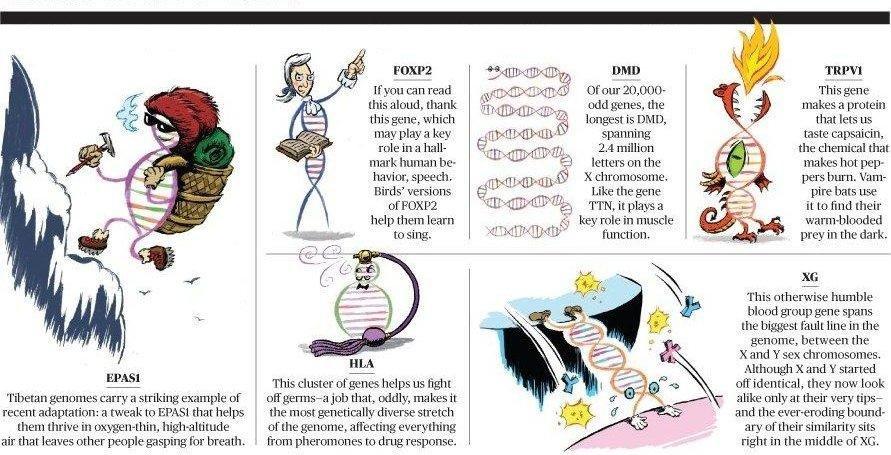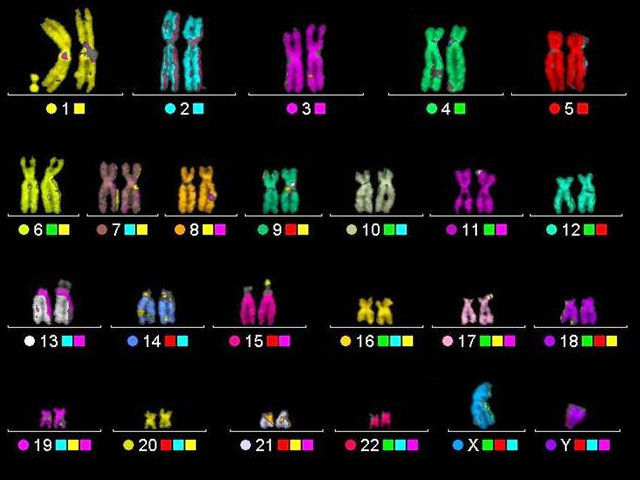These pictures show several examples of genes with interesting functions and depict how genes can give living things many different abilities.
A gene is a
segment of DNA that codes for a specific trait, like gender (X and Y chromosomes), hair color, skin
color, or whether or not you have dimples. The pictures above give
examples of several other interesting traits genes code for. Parents pass on
genes to their offspring; the expression of inherited genes is what causes
children to look like their parents. Genes are further grouped into very
long DNA molecules called chromosomes,
which look like crosses. In the
case of humans, we have 46 chromosomes in total- 23 from each parent. An organism's genome is its complete set of chromosomes. All of the information needed for that organism to function and live is completely stored in its genome! Going
back to our construction-worker analogy, you now understand why DNA is
like a blueprint: It codes for genes and tell an organism what to
look like and how to act. (8) For more information on genes, an excellent resource is the following website: http://www.news-medical.net/health/Genes-What-are-Genes.aspx
A karyotype, or representation of all the chromosomes in an organism, of all 23 pairs of chromosomes of a human are shown. The human is a male because he has X and Y chromosomes. |
Now, we see that to comprehend an organism's genome, we must first understand its chromosomes, its genes, and at the very basic level- the sequence of DNA. This is why DNA sequencing is so crucial to our understanding of genetics. Now that we have learned about the rudiments of genetics, we will next explore two different processes for preparing DNA which are invaluable and commonly used in DNA sequencing.

